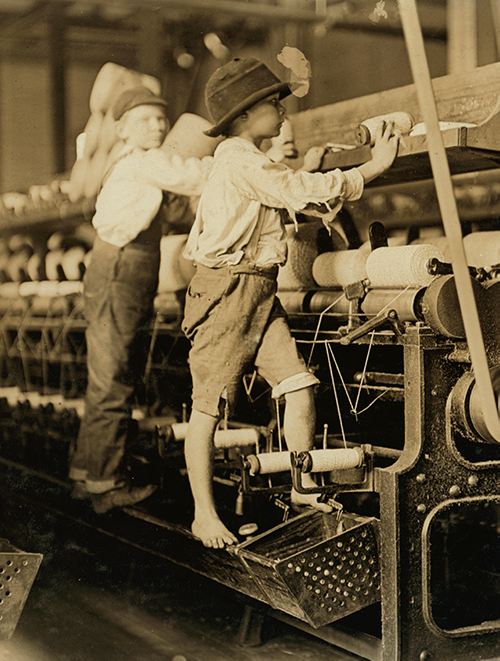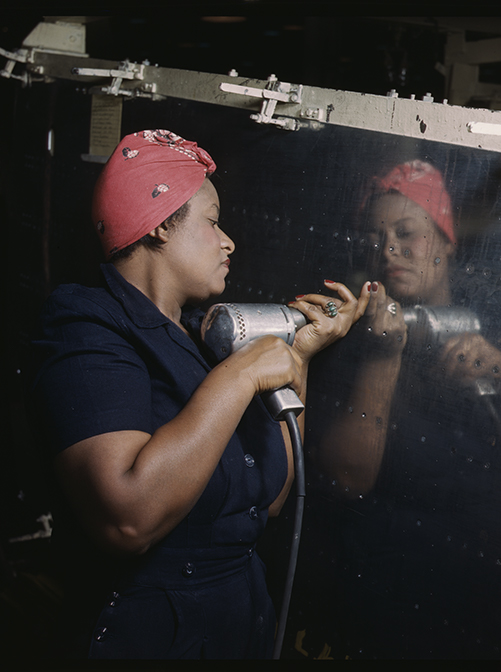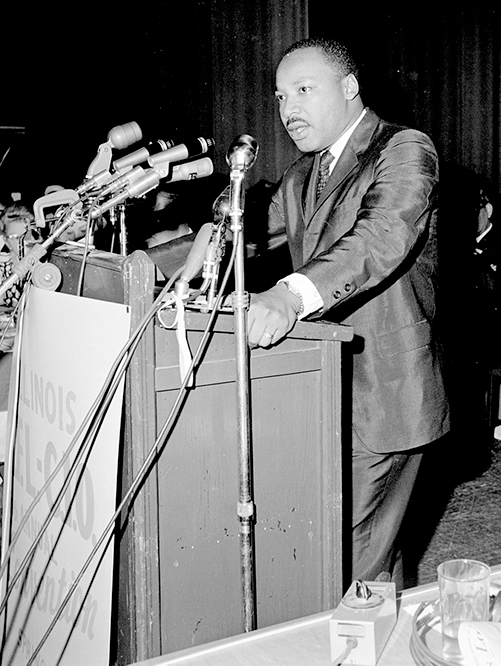This Monday, most U.S. workers and their families will be celebrating Labor Day. Like many holidays it has been sanitized over time, observed primarily through sales, cookouts, and parades. Behind these quaint scenes, however, is a forgotten history; stories of workers (adults and children alike) who risked prison, brutality and even death to secure the basic rights and freedoms that eventually transformed the American workplace – and served as the foundation for the compliance profession of today.
A brief history of organized labor in context
Union leaders and robber barons in early America
The American labor movement has a long and rich history, predating the nation itself. In 1765, the revolutionary Sons of Liberty were formed largely by skilled laborers organizing for their freedom. After its founding, promises of abundant work, free land and the American Dream drew new immigrant laborers to the nascent country.

Child laborers working at Bibb Mill in Macon, Ga, 1909. Photo by Lewis W. Hine, Library of Congress, LC-DIG-nclc-01581.
Over time, however, a mix of industrialization, racism and a lack of legal and regulatory protections led to the steady dehumanization of American laborers. By the late 19th century, powerful industrialists, derisively referred to as “robber barons,” routinely used their wealth and influence to control nearly every aspect of workers’ lives – and to brutally retaliate against any who fomented protest. The Ludlow Massacre – in which the Colorado National Guard (at the behest of John D. Rockefeller) slaughtered 23 striking miners and their families (including 11 children burned alive) – is just one example of a number of now-forgotten atrocities.
In response, workers began to organize. Early groups like the Industrial Workers of the World and the Knights of Labor had some successes. Mary “Mother” Jones’ “children’s crusade” helped raise the issue of child labor, while Eugene V. Debs’ willingness to risk and suffer imprisonment for his organizing efforts laid bare (and eventually eliminated) the injustice of anti-labor injunctions.
Rise of the AFL-CIO and the Department of Labor
It was the formation of the American Federation of Labor (AFL) in 1886, however, that truly marked the start of the modern labor movement. Based on skilled (or craft) labor, the AFL enabled laborers to collectively bargain with owners for better pay, safety, and security. In 1913, President Taft signed a bill splitting the Department of Commerce and Labor – giving unions their first cabinet-level advocate. The creation of the Congress of Industrial Organizations (CIO) in 1935 brought large numbers of unskilled (or industrial) laborers into the Movement, further strengthening it.

Wartime laborer working on a Vengeance dive bomber in Vultee-Nashville, TN, 1943. Photo by Alfred T. Palmer, Library of Congress, LC-DIG-fsac-1a35371
The economic collapse of 1929 initially posed a mortal threat to organized labor. However, the subsequent election witnessed a wave of pro-labor politicians and legislation, culminating in the presidency of Franklin D. Roosevelt and the signing of the National Labor Relations Act (NLRA). Throughout the Great Depression and World War II, labor leaders like William Green, John L. Lewis, Reuben Soderstrom and others worked with the Roosevelt and Truman administrations to institute many of the then-revolutionary rights and protections that are commonplace today. Workmen’s compensation, the right to strike, social security and old-age pensions, workplace safety laws, the weekend, the 40-hour week, and labor protections for women and people of color all grew out of this dynamic partnership.
The post-war era saw continued gains for organized labor. In 1955, the AFL and CIO merged to form the nation’s preeminent labor organization. However, the political tide had begun to turn. Anti-labor forces leveraged real union abuses and imagined fears of a “red scare” to pass the Taft-Hartley Act, severely curtailing labor’s ability to organize and negotiate. The bill also enabled the passage of “right-to-work” laws in many states, further reducing unions’ strength.
At its height, the percentage of unionized workers in the United States was nearly 27%; today, that number is roughly 10%.
Parallels between the labor and compliance movements
Dedication to building ethical workplaces
Although distinct from the Labor Movement, the Ethics and Compliance Movement shares much of its DNA. Thematically, both movements are predicated on the belief that businesses are obligated to behave ethically. Though that may seem obvious to risk and compliance (R&C) practitioners, it is not (nor has it been) a universally shared view. Many have long argued that businesses are ethically bound to place shareholder interests (i.e. profit) before all other considerations.
Risk and Compliance professionals know that regulatory compliance is not an end unto itself. Strong compliance programs build better businesses.
That’s why actions as seemingly incremental and benign as the Business Roundtable’s recent decision to withdraw its decades-old endorsement of shareholder primacy drew significant criticism from some quarters of the business community. These arguments mirror the classic critiques of organized labor from business organizations like the Manufacturers and Employers Associations, who have asserted “moral obligations have no place in the industrial field in settling industrial questions.”
Importance of government oversight
On a practical level, labor and compliance also share an interdependent relationship with government, particularly with respect to legislation and regulation. Just as the NLRA and employment law are instrumental to organized labor, so too are the Foreign Corrupt Practices Act and the Federal Sentencing Guidelines for Organizations to R&C. Regulatory guidance from government bodies like the departments of Labor, Justice and the Treasury also helps drive oversight and reform.
As our recent Risk and Compliance Benchmark Report revealed, regulatory awareness and alignment remain the primary drivers of compliance program priorities and decision making.
Of course, R&C professionals know that regulatory compliance is not an end unto itself. Strong compliance programs build better businesses. For example, studies have shown that robust internal reporting and investigation programs are correlated not only with reduced regulatory fines and material lawsuits, but with increased productivity and profitability. Labor leaders have likewise made the case that unionization ultimately leads to a better relationship between workers and employers, resulting in comparable gains.
Connections with equality and Civil Rights
Finally, both labor and compliance are connected to a broader struggle for greater social equity. Labor has had a long (if complicated) association with the Civil Rights Movement. As the Rev. Dr. Martin Luther King Jr. said in his 1965 speech before the Illinois AFL-CIO:

Rev. Dr. Martin Luther King Jr. Speaking at the Illinois AFL-CIO convention, 1965.
“It is not a coincidence the labor movement and the civil rights movement have the same essential origins. Each is a movement that grew out of burning needs of an oppressed poor for security and equality. Each was denied justice by the dominant forces of society and had to win a place in the sun by its own intense struggle and indescribable self-sacrifice.”
King’s fateful trip to Memphis in April of 1968 was made in support of a labor strike, whose organizing slogan of “ I Am a Man” was a precursor to today’s “Black Lives Matter.”
Similarly, compliance professionals have an important role to play in ensuring civil rights are respected in the workplace. As attorney Jeff Kaplan writes in his article on how compliance and ethics (C&E) practitioners can offer a framework for advancing human rights, compliance officers “have considerable expertise in ‘embedding integrity processes deep into business operations’…[which] may be especially central and vital to establishing human rights C&E programs.” Through strong codes of conduct, policies and procedures, training, internal reporting and investigatory functions, compliance officers can have a critical impact on their organizations’ efforts to address discrimination, diversity and inclusion.
Further, as NAVEX Global recently affirmed in its statement on the issue of racism, the compliance profession’s mission compels us to “[fight] racial injustice and inequality across our business and within the communities where we live.”
So this Labor Day, take care to stop and remember the sacrifices made by previous generations of ordinary, hard-working people of all colors and creeds to ensure that we as workers are treated not as property, but as people worthy of dignity.
And as members of the compliance community, we should also use this occasion as an opportunity to recommit ourselves to building on the kind of organizations those laborers first envisioned – with workplaces that are ethical, safe, and compliant.

